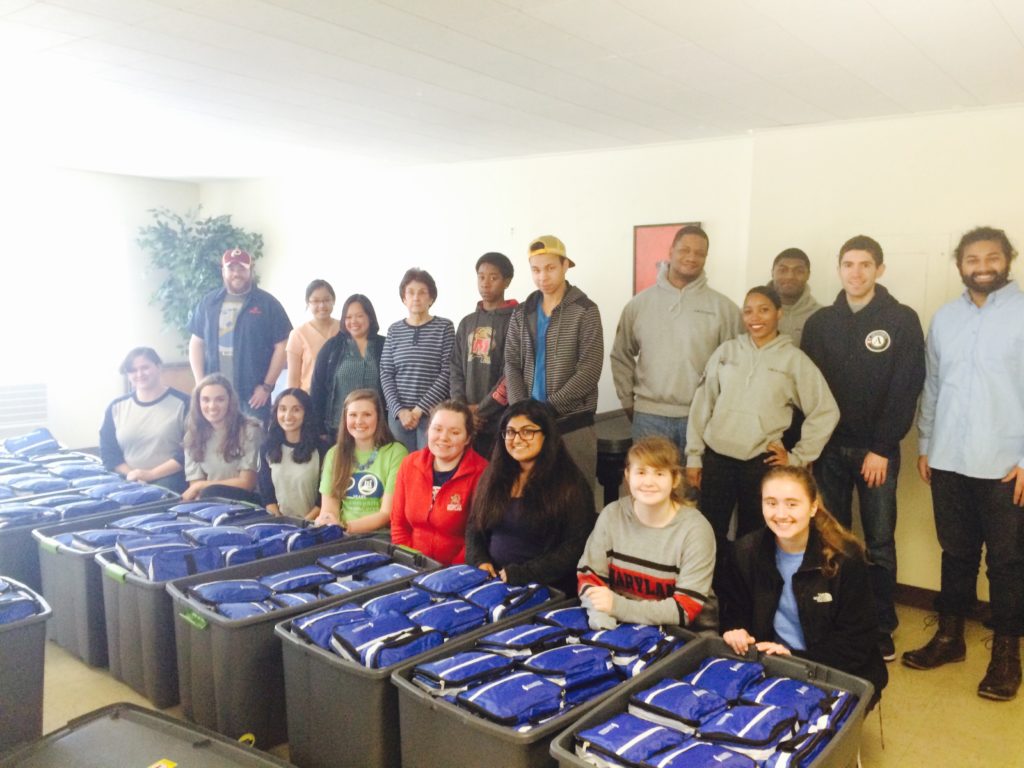 We had a top notch volunteer session this past Saturday! I can’t believe that every session we host I am able to report it is an even better group than the last, but we really lucked out with this bunch!
We had a top notch volunteer session this past Saturday! I can’t believe that every session we host I am able to report it is an even better group than the last, but we really lucked out with this bunch!
 We had a top notch volunteer session this past Saturday! I can’t believe that every session we host I am able to report it is an even better group than the last, but we really lucked out with this bunch!
We had a top notch volunteer session this past Saturday! I can’t believe that every session we host I am able to report it is an even better group than the last, but we really lucked out with this bunch!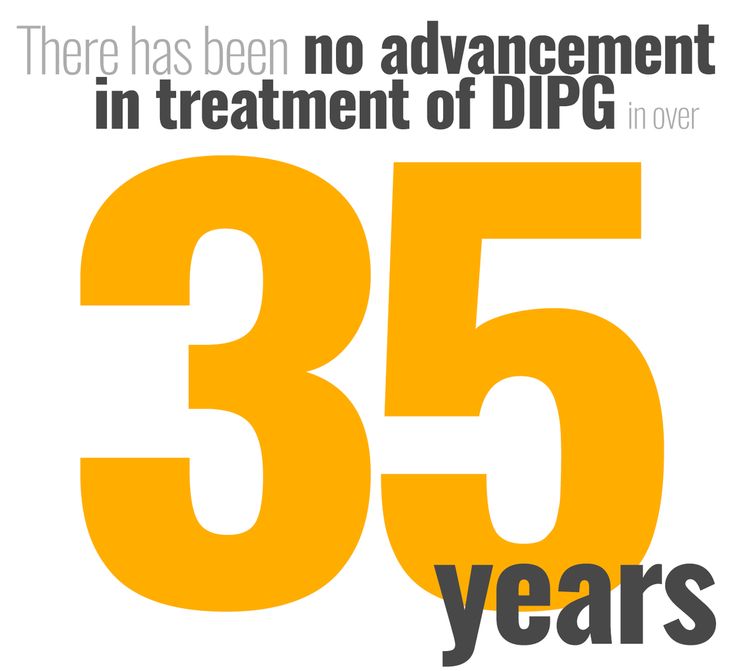 May is National Brain Tumor Awareness Month, and with this important awareness event comes the opportunity to shine a critical spotlight on one of the most deadly forms of childhood cancer: Diffuse Intrinsic Pontine Glioma (DIPG). Introduced in January with bi-partisan support, House Resolution 586 calls for the fourth week of May to be designated DIPG Awareness Week. As spring advances and May draws nearer, we need your help to ensure that this important legislation passes through Congress immediately!
May is National Brain Tumor Awareness Month, and with this important awareness event comes the opportunity to shine a critical spotlight on one of the most deadly forms of childhood cancer: Diffuse Intrinsic Pontine Glioma (DIPG). Introduced in January with bi-partisan support, House Resolution 586 calls for the fourth week of May to be designated DIPG Awareness Week. As spring advances and May draws nearer, we need your help to ensure that this important legislation passes through Congress immediately!
In order to become law, H.Res. 586 requires only a simple majority vote in the House of Representatives; just one simple vote is all it will take to help bring nation-wide attention to this devastating illness. But before it can get to the House of Representatives, it must pass through the Committee on Energy and Commerce. And it needs your support to get more sponsors before it can pass through this committee.
On or before April 20, we encourage you to call your Representative(s) and encourage them to support H.Res. 586! Our friends at the Michael Mosier Defeat DIPG Foundation have provided some helpful talking points to use when promoting support for DIPG Awareness Week:
• “My name is ______. I am a constituent of Representative _______.
• I am calling to urge Representative ______ to support House Res. 586, which designates the fourth week in May as “DIPG Awareness Week.”
• DIPG (Diffuse Instrinsic Pontine Glioma) is the leading cause of childhood death due to brain tumors.
• The five-year survival rate is less than one percent. This is one of the deadliest childhood cancers out there.
• Between 200 and 400 children in the United States are affected by this disease each year.
• We need better research to understand DIPG and develop effective treatments and supporting House Res. 586 is a great start for Congress to demonstrate its support.
• House Res. 586 was introduced in January and we want to make sure that it can pass before May, which is Brain Tumor Awareness month.
• We need the support of Representative ______ to make that happen and we thank the Congressman/Congresswoman for his/her support. House Res. 586 is currently pending before the Energy and Commerce Committee.
• Is this something you think the Congressman/Congresswoman can support? Families like ours would be grateful.
• For more information on DIPG, you should visit: www. ______.
• Thank you.
For more information on steps you can take to help make DIPG Awareness Week into law, please visit http://www.defeatdipg.org/hres586/ or https://www.facebook.com/events/1731183720450520/.
Diffuse Intrinsic Pontine Glioma (DIPG) remains one of the deadliest forms of childhood cancer, with a long-term survival rate of less than 1%. An especially aggressive type of cancerous tumor, DIPG grows in an area of the brain stem known as the pons, which is responsible for many critical bodily functions like heartbeat, breathing, swallowing, eyesight, and balance. As it grows, it puts increasing pressure on the nerves controlling the pons and the essential functions it regulates, quickly interfering with almost all normal functions of the body. Symptoms of DIPG include double vision, reduced eye movement, facial weakness, and problems walking, speaking, chewing, and swallowing. Eventually, the tumor will begin to compromise the body’s ability to breathe and regulate heartbeat. Unfortunately, the average lifespan after diagnosis with DIPG is only nine short months.
The goal of H.Res. 586 is to bring national awareness to the deadly threat posed by this particular form of childhood cancer, which presents an on-going challenge to researchers and oncologists alike. It calls for Congress to:
The American Childhood Cancer Organization (ACCO) is a non-profit charity dedicated to helping kids with cancer and their families navigate the difficult journey from cancer diagnosis through survivorship. Internationally, the ACCO is the sole US member of Childhood Cancer International (CCI), the largest patient-support organization for childhood cancer in the world. At the national level, the ACCO promotes the critical importance of ensuring continued funding into new and better treatment protocols for childhood cancer. At the grassroots level, the ACCO is focused on the children: developing and providing educational tools for families and learning resources for children in order to make the lives of children and their families easier and brighter during this difficult time. Many of our resources are available free of charge for families coping with childhood cancer.
For additional information about childhood cancer, on the ACCO in general, or to order resources for you or your child, please visit our website at www.acco.org.
 |
REGISTRATION REMINDER!CHILDHOOD CANCER ACTION DAYSWASHINGTON, D.C.Join Us in DC on May 16-17!
There’s still time to make plans to join the American Childhood Cancer Organization and the Alliance for Childhood Cancer for the 5th Annual Childhood Cancer Action Days. This two-day event in Washington brings our community together to advocate for important childhood cancer issues currently before Congress.
There is a registration fee of $50 per family, which includes advocacy training and materials, breakfast and lunch on May 16th, and breakfast on May 17th.
A limited number of scholarships are available, and the scholarship application deadline has been extended: Apply here by April 8th for consideration.
 Your Voice Matters
A strong showing of advocates at Action Days 2016 is more crucial than ever, as we anticipate the
(Survivorship, Treatment, Access & Research)
will be at a critical point in the legislative process. Sharing your story in Washington this spring will help us tip the scales toward securing passage of this historic, bipartisan legislation. Schedule of Events
Monday, May 16th — Issues and Advocacy Training
Tuesday, May 17th – Capitol Hill Meetings
Book Your Hotel Room by April 15!
A block of rooms has been reserved at the Holiday Inn Washington Capitol at 550 C Street, SW, which is also the training location. Rooms are available at the block rate of $259 on a first-come, first-served basis. (Eligible hotel dates: May 15, May 16, May 17)
Call 877-572-6951 or visit this link and use group code CC8 to book your room. The deadline to make your hotel reservation at this group rate is April 15th.
Can’t Attend?
A strong showing of advocates at Action Days 2016 is more crucial than ever, as we anticipate the Childhood Cancer STAR Act will be at a critical point in the legislative process.
But if you can’t join us, you can still help us make this event a big success. Here’s how:
Questions?
Check the FAQ page or contact alliance@asco.org.
Looking forward to seeing many of you there!
 Ruth Hoffman, Executive Director, ACCO
Alliance Full Member Organizations
American Academy of Pediatrics
American Cancer Society Cancer Action Network
American Cancer Society
American Childhood Cancer Organization
American Society of Clinical Oncology
American Society of Pediatric Hematology/Oncology
Association of Pediatric Hematology-Oncology Nurses
Association of Pediatric Oncology Social Workers
B+ Foundation
Children’s Brain Tumor Foundation
Children’s Cause for Cancer Advocacy
Children’s Oncology Group
CureSearch for Children’s Cancer
Leukemia & Lymphoma Society
National Children’s Cancer Society
Pediatric Brain Tumor Foundation
Sarcoma Foundation of America
Society of Pediatric Psychology
St. Baldrick’s Foundation
Alliance Partner Organizations
American Brain Tumor Association
American Pediatric Surgical Association
American Psychological Association
American Society for Radiation Oncology
Cancer Support Community
Chai Lifeline
Kids v Cancer
Mattie Miracle Cancer Foundation
National Brain Tumor Society
National Coalition for Cancer Survivorship
Patient Advocate Foundation
Rally Foundation
|
 10920 Connecticut Ave. Suite A
Kensington, MD 20895
|
Non-Hodgkin lymphoma is a form of childhood cancer that begins in lymphatic tissue that make up part of the immune system, which is responsible for fighting infection and disease. As with other forms of childhood cancer (and adult cancers as well), the cancer cells responsible for non-Hodgkin lymphoma begin their development in one area of the body, usually an organ responsible for assisting the immune system such as the lymph nodes or the spleen, but as they grow and multiply, the cancer can spread to other areas of the body as well. Unfortunately, non-Hodgkin lymphoma often does not cause noticeable symptoms in the early stages of the disease, and therefore can be difficult to detect until it has grown and spread. However, once the disease has been diagnosed through a biopsy or other diagnostic tool, pediatric oncologists will measure the spread of the disease to determine the proper treatment.
The extent to which the cancer has spread is known as “stages”. “Staging” often requires physical examinations, biopsies, and imaging tests such as CT scan, PET scan, and occasionally ultrasounds or other imaging tools. The most common system for staging Non-Hodgkin lymphoma in children is the St. Jude staging system (staging adult lymphoma utilizes the Ann Arbor system.)
The St. Jude staging system breaks down the spread of the cancer into four distinct stages:
Stage 1: The lymphoma is located in only one area of the body, such as one area of lymph nodes (the neck, groin, or armpit) or exists as a single tumor not in the lymph nodes. Cancer cells are not present in the chest or abdomen.
Stage 2: Lymphoma is not in the chest, and meets one of the following criteria:
Stage 3: A stage 3 lymphoma meets one of the following criteria:
Stage 4: The lymphoma is found in the central nervous system (the brain or the spinal cord) or the bone marrow when diagnosed.
Correctly staging non-Hodgkin lymphoma is important because it will help determine the appropriate course and duration of necessary treatment. Phase 1 and 2 are considered “limited-stage” cancer, and are usually treated in a similar fashion. Phase 3 and 4 are described as “advanced-stage” and are generally treated similarly as well.
Luckily, thanks to significant medical advances in recent decades, the prognosis for all stages of non-Hodgkin lymphoma have increased greatly and children who are cancer-free for at least five years are generally considered “cured”, as non-Hodgkin lymphoma rarely returns once this much time has passed. Assuming an aggressive treatment protocol, children diagnosed with Stage 1 or Stage 2 lymphoma generally have a greater than 90% survival rate, while children diagnosed with Stage 3 or Stage 4 lymphoma have a greater than 80% survival rate.[1] Unfortunately, survival rates for children diagnosed with advanced-stage anaplastic large cell lymphoma are the one exception to these statistics, with a “cure rate” of only 60-75%.
The American Childhood Cancer Organization (ACCO) is a non-profit charity dedicated to helping kids with cancer and their families navigate the difficult journey from cancer diagnosis through survivorship. Internationally, the ACCO is the sole US member of Childhood Cancer International (CCI), the largest patient-support organization for childhood cancer in the world. At the national level, the ACCO promotes the critical importance of ensuring continued funding into new and better treatment protocols for childhood cancer. At the grassroots level, the ACCO is focused on the children: developing and providing educational tools for families and learning resources for children in order to make the lives of children and their families easier and brighter during this difficult time. Many of our resources are available free of charge for families coping with childhood cancer.
For additional information on non-Hodgkin lymphoma, stages of non-Hodgkin lymphoma, or on the ACCO, or to order resources for you or your child, please visit our website at www.acco.org.
[1] Statistics about long-term survival rates can be useful, but they cannot predict the outcome for any one particular child; a number of factors affect each child’s prognosis, including the type of lymphoma, the location and size of the cancer, how well it responds to treatment, and other factors will affect your child’s long-term prognosis.
For additional information on our resources or information on how to obtain our resources free of charge, please visit our website at www.acco.org.
For more information about the American Childhood Cancer Organization and how we can help, call 855.858.2226 or visit:
Want To Read American Childhood Cancer Organization On Your Phone? Click the NoteStream logo: 
“Reason this person is a Gold Ribbon Hero: Anna Reece is 18 months old and arrived at St. Jude today. She and her parents are beginning their fight against rhabdomyosarcoma. Multiple tumors have been found on scans. Her parents, family and friends are devastated. I have experienced family members and friends with cancer and I believe that the larger the support group, somehow, gives just a little bit more comfort and makes even the hardest days a little easier.” – Lauren R
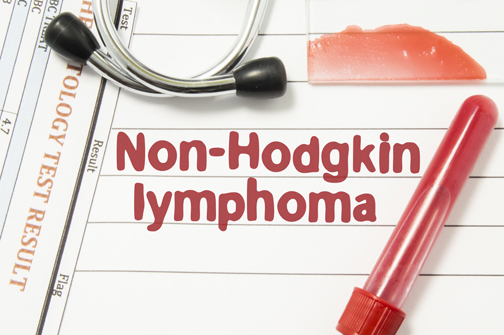 Non-Hodgkin lymphoma is a form of childhood (and adult) cancer that develops in the immune system, specifically in lymphocytes, a type of white blood cell responsible for fighting infection and disease. Non-Hodgkin lymphoma usually begins in B-cell lymphocytes, which are responsible for making germ-fighting antibodies, but it can also develop in T-cell lymphocytes, which are generally responsible for destroying cells infected with viruses, fungi, or bacteria. Because lymphocytes and other forms of lymphatic tissue are found in organs throughout the body, non-Hodgkin lymphoma can start almost anywhere in the body, but is usually found in organs that play a large role in fighting infection, such as the lymph nodes (located in the neck and chest, under the armpit, and in the groin), the spleen, the thymus, the adenoids and tonsils, the digestive tract, and the bone marrow.
Non-Hodgkin lymphoma is a form of childhood (and adult) cancer that develops in the immune system, specifically in lymphocytes, a type of white blood cell responsible for fighting infection and disease. Non-Hodgkin lymphoma usually begins in B-cell lymphocytes, which are responsible for making germ-fighting antibodies, but it can also develop in T-cell lymphocytes, which are generally responsible for destroying cells infected with viruses, fungi, or bacteria. Because lymphocytes and other forms of lymphatic tissue are found in organs throughout the body, non-Hodgkin lymphoma can start almost anywhere in the body, but is usually found in organs that play a large role in fighting infection, such as the lymph nodes (located in the neck and chest, under the armpit, and in the groin), the spleen, the thymus, the adenoids and tonsils, the digestive tract, and the bone marrow.
Non-Hodgkin lymphoma accounts for about 5% of all childhood cancers in the United States today.
Because non-Hodgkin lymphoma begins in lymphatic tissue that can be found throughout the body, it can cause a wide variety of different symptoms depending on the specific location of the cancer cells. As with many forms of childhood cancer, non-Hodgkin lymphoma often does not cause detectable symptoms until it reaches a large size. The most common symptoms of non-Hodgkin lymphoma include:
Unfortunately, because non-Hodgkin lymphoma involves the immune system, many of these symptoms can easily be mistaken for a common cold, virus, or childhood infection. For instance, swollen lymph nodes are one of the primary symptoms of this type of childhood cancer, but most cases of enlarged lymph nodes are, in fact, caused by routine infection rather than non-Hodgkin lymphoma.
Lymphoma in the abdomen can be more readily distinguished from infection, as it usually manifests as a swollen, painful belly. It can involve the build-up of fluid in the abdomen area, a swollen spleen constricting the stomach, or bowel or kidney blockage. Common symptoms of non-Hodgkin lymphoma located in the abdomen include:
In cases where the lymphoma grows in the thymus or lymph nodes in the chest, the growth can begin to press against the vein that carries blood from the head and upper torso to the heart. Known as SVC Syndrome, this symptom can lead to swelling in the face, neck, arms, and chest, cause breathing trouble, headaches, and dizziness, and can be life-threatening if not treated immediately.
If you believe your child is exhibiting the symptoms of non-Hodgkin lymphoma, your first step is to express your concerns to your child’s pediatrician. Because many of these symptoms are likely to be caused by a routine infection rather than cancer, the pediatrician will likely begin with close observation and a course of antibiotics to rule out infection. If the symptoms do not resolve, or your child’s health continues to deteriorate, the pediatrician will most likely pursue diagnostic testing in the form of a biopsy of the affected tissues. If the biopsy confirms non-Hodgkin lymphoma, your child will be referred to a pediatric oncologist to begin treatment as soon as possible.
The American Childhood Cancer Organization (ACCO) is a non-profit charity dedicated to helping kids with cancer and their families navigate the difficult journey from cancer diagnosis through survivorship. Internationally, the ACCO is the sole US member of Childhood Cancer International (CCI), the largest patient-support organization for childhood cancer in the world. At the national level, the ACCO promotes the critical importance of ensuring continued funding into new and better treatment protocols for childhood cancer. At the grassroots level, the ACCO is focused on the children: developing and providing educational tools for families and learning resources for children in order to make the lives of children and their families easier and brighter during this difficult time. Many of our resources are available free of charge for families coping with childhood cancer.
For additional information on non-Hodgkin lymphoma and its symptoms, on the ACCO in general, or to order resources for you or your child, please visit our website at www.acco.org.
For more information about the American Childhood Cancer Organization and how we can help, call 855.858.2226 or visit:
Want To Read American Childhood Cancer Organization On Your Phone? Click the NoteStream logo: 
“Reason this person is a Gold Ribbon Hero: Rachel was diagnosed on October 18 with are rare and aggressive cancer known as ATRT stage 4. She was 14 month at the time of the diagnose. She is such a strong warrior she’s been thru so much from surgery to aggressive chemo and radiation at such a young age. She amazes me everyday the way she fight for her life.. She’s very strong she wakes up happy everyday. She’s always playing & laughing. Cancer is not going to win Rachel will come victorious out of the ugly disease.. Rachel is my world my Hero my everything..” – Carla B.
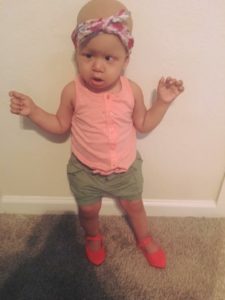
“Reason this person is a Gold Ribbon Hero: Reason this person is a Gold Ribbon Hero: On March 2, 2012 Dashiell was diagnosed with a cancerous liver tumor called Hepatoblastoma. After multiple chemo therapies and surgery to remove the tumor at the University of Iowa Children’s Hospital, he fell into a high-risk category for recurrence so we took him to specialists at Cincinnati Children’s Hospital. After 3 months of treatment new tumors were found in his liver and he was immediately placed on the transplant list which he received 3 weeks later. After 7 weeks he got to go home to his brothers and sweet doggie. He was so happy, he did a somersault on the living room floor! During his next visit a nodule was found in his right lung. The cancer had spread. He underwent surgery to remove it. But at his next monthly appointment new nodules were found in both lungs. The cancer was now believed to actually be the more aggressive, extremely rare Transitional Liver Cell Tumor. But to be absolutely sure we tracked down Dr. Arthur Zimmerman, the Swiss pathologist to originally identify TLCT. After reviewing Dashiell’s case history/pathology slides (free of charge), he confirmed it was this type of cancer. There is no cure for it and diagnosis is terminal. To stave off the inevitable Dashiell underwent 10 rounds of radiation and an experimental chemo to no avail. As with all of his treatments, Dashiell did not suffer any concerning side-effects. In fact, except for hair loss, he never endured the expected routine side-effects such as infection, mouth sores, nausea or fatigue. Even recovery from the all of the surgeries was without incident. Despite all our efforts, he succumbed to this disease on 6/17/13. To ensure Dashiell’s journey was not in vain, his post-mortem tumors were donated to scientific research through UI Children’s Hospital, Cincinnati Children’s Hospital, the COG and SIOPEL. He is currently one of three worldwide confirmed cases of TLCT with data-banked bio-specimens. Dashiell had a blessed life, as sweet and blissful as any child could possibly dream — believing in Santa Claus, eating treats, cuddling Mama and Daddy (Pam and Brian), playing with his brothers (Orson and Sumner) and hugging his doggie (Cider). He never knew one day of sorrow, neglect or abuse. He is deeply loved and all of his days were pure with happiness. His legacy is honored as we advocate for childhood cancer awareness/projects/programs/organizations, better treatment options, advancement in higher cure rates and increased medical research funding. Dashiell’s indomitable spirit lives on in the hearts of his family, friends and supporters. To learn more about Dashiell go here : https://www.facebook.com/DashiellsMahnaMahnaPage” – Pamela C.
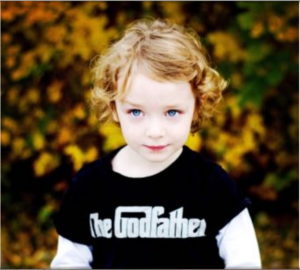
Cancer is a general term for diseases caused by the uncontrolled growth of abnormal cells. Awareness of and attention to adult cancers has grown exponentially over the past decades, but many people still don’t know much about childhood cancer. Did you know that 1 out of every 285 children in the U.S. will be diagnosed with childhood cancer before they turn 20? Or that more than 1,700 American children will die from childhood cancer this year? At the American Childhood Cancer Organization (ACCO), we’re committed to building awareness about this devastating disease and the terrible toll it takes on children and their families. So let’s start with a few simple facts about childhood cancer.
Childhood cancer is different from adult cancer. Unlike adult cancers, childhood cancers are not closely linked to lifestyle choices or environmental exposure, and there are no screening tests that enable early detection. Often, childhood cancer is not detected or diagnosed until it begins causing noticeable symptoms.
The cancers children get are different from the cancers adults get. Some childhood cancers only occur in very young children, some are more common in teens and young adults, and some never occur in adults at all. The most common types of childhood cancer are:
Although still considered to be “rare” by some, the fact is that childhood cancer is the leading cause of death by disease for children under the age of 15, and it seems like most people know at least someone in their school or their town who has been personally affected by childhood cancer. And while rates of childhood cancer are increasing, research into the development of new, less toxic treatment options for childhood cancer is not keeping pace: of the more than 100 new cancer drugs approved by the FDA since 1990, only three were developed specifically to treat childhood cancer. Many forms of childhood cancer are now considered treatable, with long-term survival rates above 80 or even 90%, but some forms of childhood cancer still have extremely high mortality rates, and most childhood cancer survivors are left with long-term health problems as a result of their cancer treatment.
Childhood cancer is devastating, but you can help. The American Childhood Cancer Organization is dedicated to raising awareness about childhood cancer, as well as providing resources and support to children and families affected by childhood cancer. Please donate so we can continue to provide our services for free.